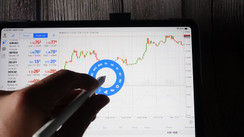Last month, Asian nations spent $50 billion of their forex reserves, the most since March 2020, to protect their economies from the US dollar's inexorable march. Without China, developing Asian nations are estimated to have spent close to $30 billion in dollar sales on the spot market in just September, according to companies that are experts in monitoring international capital movements. When Japan is taken into account, that amount increases to $50 billion.
The very first nine months of 2022 saw nearly $89 billion in dollar sales across the area, including Japan, making it the most active time for foreign exchange spending since at least 2008. The company based its projections on information provided by monetary authorities and other governmental agencies, and it makes adjustments for variations in foreign exchange values. As a result of the most ruthless interest rate hike since the 1980s, trade is currently at an all-time high. The value of the reserve of foreign currencies held by central banks has decreased due to the spike in the dollar.
Though recent USD sales by nations like South Korea, India, Taiwan, and Japan have been extensively covered in the media, activity by other nations was primarily reported by central banks. According to the most recent data from the central bank, South Korea sold almost $17 billion in addition to Japan's $20 billion in sales in September. Thailand, the Philippines, Taiwan, Hong Kong, and Taiwan were all net dollar sellers in past months.
The level of intervention might still be picking up, as the yen's Thursday decline to its bottom level in far more than three decades revived rumours of potential action by Japanese authorities after a spike in activity last month. There is little doubt that Asian governments have regularly used intervention in foreign exchange markets to reduce volatility and devalue their currencies. These events bring back memories of the 1990s Asian currency crisis.
An extensive reallocation of assets and deteriorating asset prices may both be contributing factors to the reduction in reserves. However, the main issue is that central banks must sell in order to have cash on hand. Globally, forex reserves are decreasing. This year, the inventory of global reserves fell by more than $1 trillion, or 8.9%, to less than $12 trillion, which is the greatest decrease since 2000.





